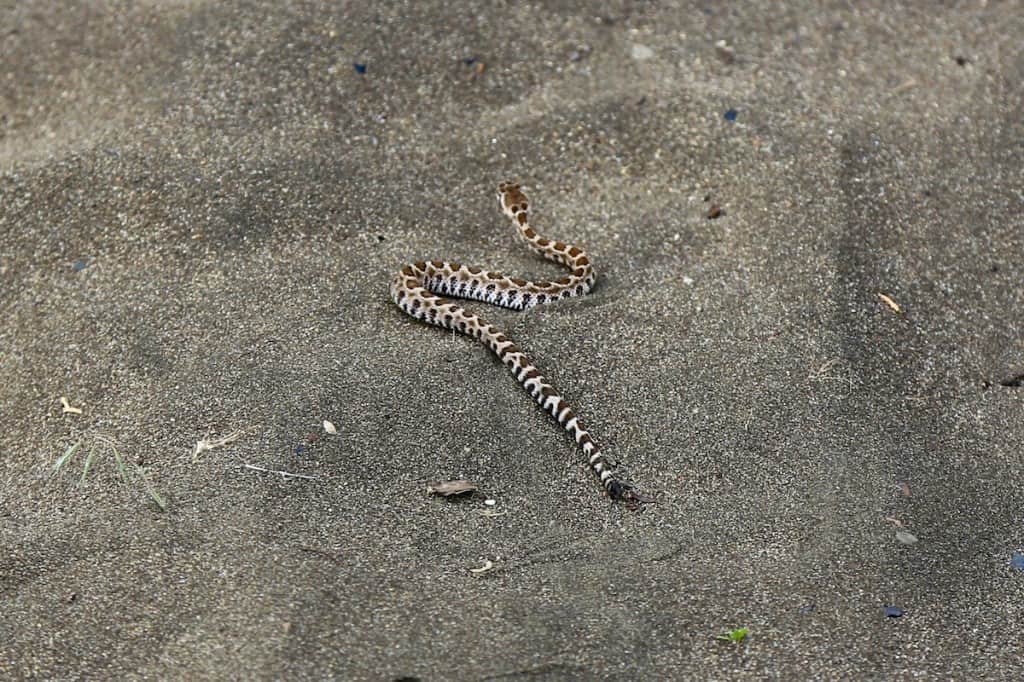River Safety: Rattlesnakes
Rattlesnakes are some of the most foreboding creatures in the wilderness. However, like most of the fauna you encounter out there, they just want to be left alone. The chance of actually getting bitten is slim to none if you follow smart wilderness protocols. Snakes are very sensitive to ground vibrations and when they sense something large approaching, like a human for example, they will do their best to avoid it.
Rattlesnakes can control the release of venom from either both, one, or neither or their fangs, but while not all rattlesnake bites will lead to envenomation of a victim, anyone bitten must be evacuated as soon as possible. It's also important to note that young rattlesnakes are more dangerous than adults as they do not yet know how to control their venom release.

A young rattlesnake - notice how difficult it is to identify its rattle
Signs of envenomation vary, but here is a general list of symptoms that often occur.
Signs of Envenomation
- Fang marks
- Swelling, bruising, or blistering
- Continued pain around the bite
- Weakness, sweating, chills
- Nausea or vomiting
- Numbness or swollen lymph nodes
- It's possible that someone has an allergic reaction to snake venom and will need treatment for anaphylaxis
Because snake bites are so feared and so commonly talked about, a ton of misinformation surfaces. Here's a list of Do's and Don'ts in case of rattlesnake bites:
Do's
- Move everyone in your party away from the snake. Everyone!
- Remove constricting clothing or jewelry near the bite
- Calm down the victim
- Immobilize the limb or area of the bite
- Clean the bite with soap and water
- Monitor for signs of envenomation
- You can splint the limb if it will help with transport
- Evacuate the patient ASAP
Don'ts
- Don't handle the snake
- Don't use a tourniquet
- Don't elevate the bitten limb
- Don't cut the bite with a knife
- Don't suck out the venom
- Don't apply ice or cold water to the bite
- Don't apply electricity to the bite
It's important to reiterate that the best way to avoid rattlesnake bites is to avoid rattlesnakes. If you see or hear one, slowly walk away from the area. It's also always recommended to familiarize yourself with wilderness medical protocols and take a Wilderness First Aid class.




